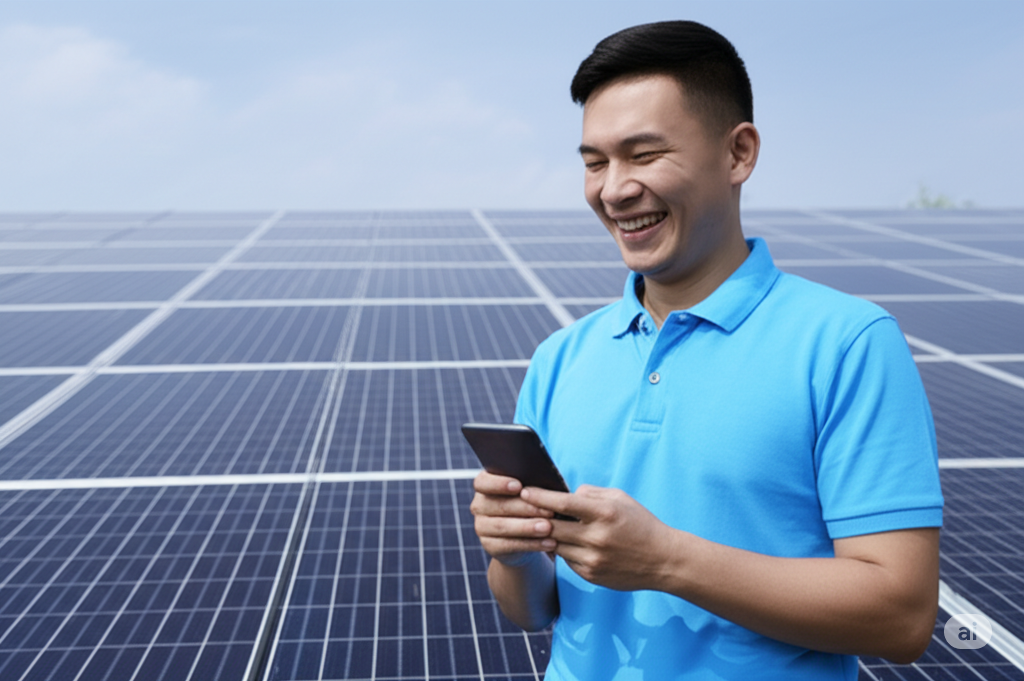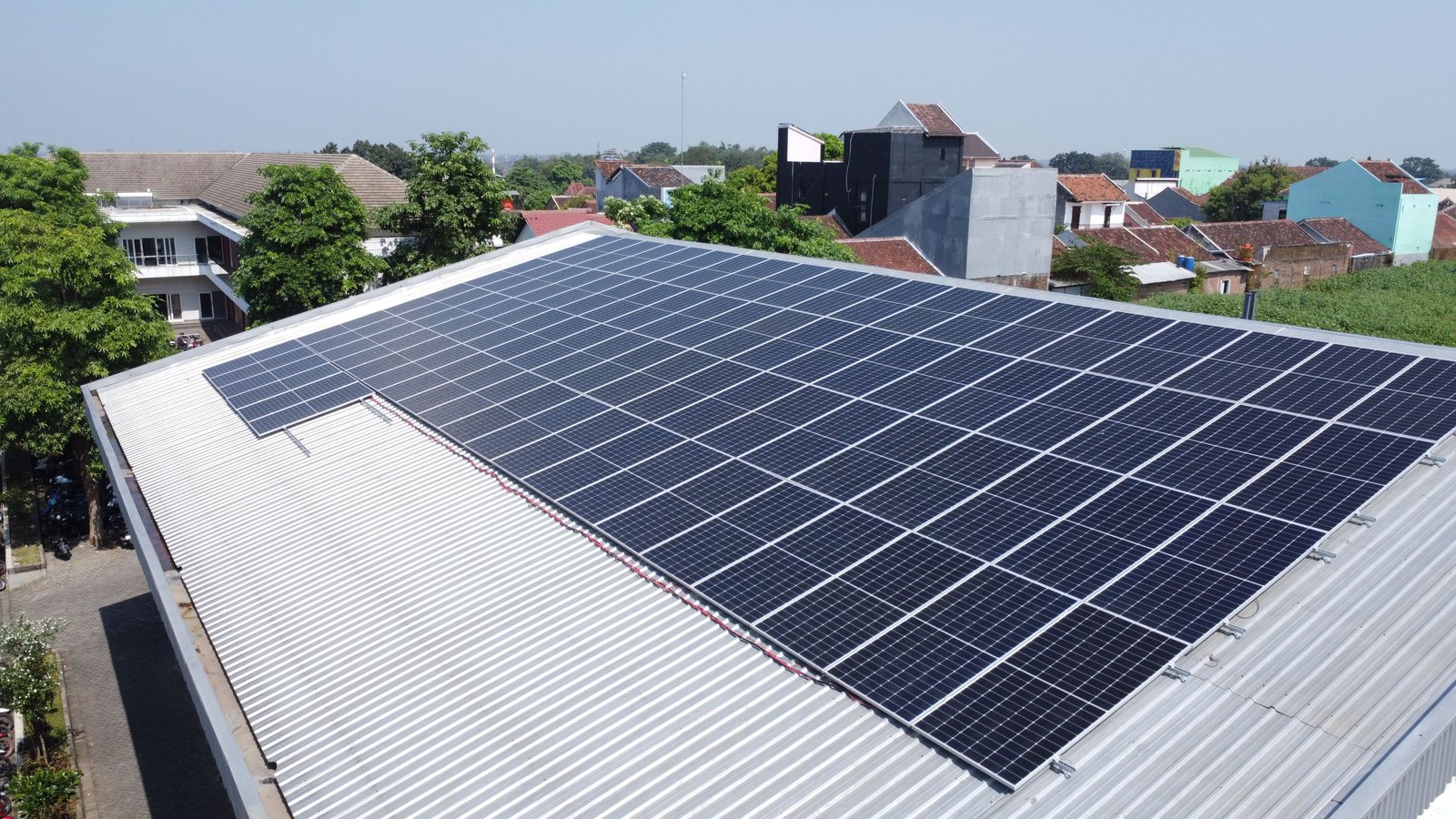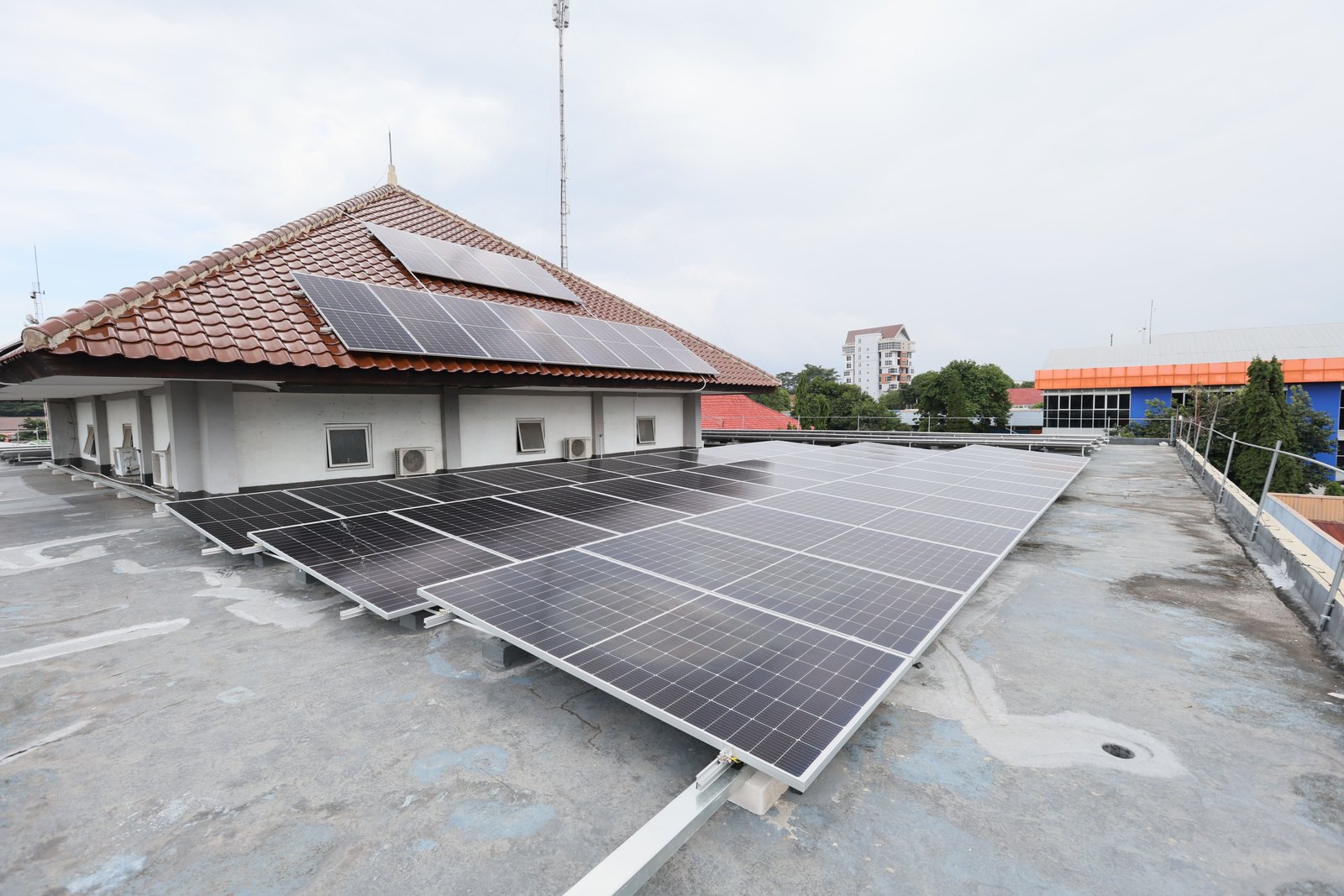What is a solar power plant (PLTS)?
PLTS, or Solar Power Plant, is a system that converts solar energy into electrical energy using solar panels, leveraging the photovoltaic effect where solar cells on the panels absorb sunlight and generate an electric current, which is then processed for use.
PLTS, or Solar Power Plant, is a system that converts solar energy into electrical energy using solar panels, leveraging the photovoltaic effect where solar cells on the panels absorb sunlight and generate an electric current, which is then processed for use. The following is a general explanation of a PLTS system:
Main Components
- Solar Panels: Solar panels are the main component of a PLTS, functioning to capture solar energy. These panels consist of photovoltaic cells that convert sunlight into electricity.
- Inverter: The inverter functions to convert the direct current (DC) generated by the solar panels into alternating current (AC), which can be used for electrical appliances.
- Battery (Optional): Batteries are used to store the electrical energy generated by the solar panels. These batteries are useful when the sun is not shining or at night.
- Charge Controller (Optional): The charge controller regulates the charging of the batteries to prevent overcharging, which can damage them.
- Cables and Connectors: Cables and connectors are used to connect all the components of the PLTS.
- Electricity Meter: An electricity meter is used to measure the amount of electrical energy generated by the PLTS. In on-grid systems, this meter also functions to measure the electrical energy that is fed into the public electricity grid.
How a Solar Power Plant (PLTS) Works
- Solar Energy Absorption: Solar panels absorb solar energy and convert it into direct current (DC) electrical energy.
- Current Conversion: The inverter converts the direct current (DC) into alternating current (AC).
- Electricity Distribution: The AC electrical energy can be used directly for electrical appliances. If batteries are used, the electrical energy can also be stored in the batteries.
- Electricity Usage: Electrical energy from the PLTS can be used for various purposes, such as lighting, household appliances, and industry.
- On-Grid and Off-Grid Systems:
- On-Grid: The PLTS system is connected to the public electricity grid. Excess electrical energy generated can be fed into the grid, and insufficient electrical energy can be drawn from the grid.
- Off-Grid: The PLTS system is not connected to the public electricity grid. This system typically uses batteries to store electrical energy.



